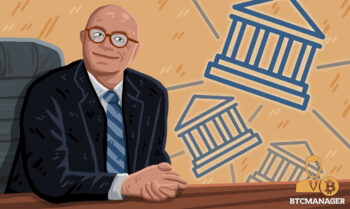2020-1-23 21:52 |
On January 9, 2009, Satoshi Nakamoto shared with us the inventions of both Bitcoin and its underlying technology, the blockchain. Now this revolutionary tech, which acts as the foundation for most cryptocurrencies, is being tested in nearly every industry. Companies ranging from real estate and public records, to forecasting and cloud storage are jumping into blockchains. Still, many people don’t have a good understanding of what a blockchain is.
In this article I’ll help you understand blockchains by exploring:
What Does a Blockchain Do? History General Overview Use Cases How Is a Blockchain Secure? Game Theory Mining Decentralization Why Use a Blockchain? Summary What Does a Blockchain Do?Blockchains excel at a very specific function: securing a distributed, trustless, immutable ledger for data. Before the invention of blockchains, there was no way to share a database with the entire internet and still trust that its data was reliable and tamper-resistant. Thanks to blockchains, we can not only rely on this data, but in the case of Bitcoin, we can use it to secure a network currently valued at $146 billion.
HistoryBlockchains were first thought of in 1991 by a group of cryptographers as a theoretical type of data structure. It would be another 18 years before a person or group named Satoshi Nakamoto actually put a blockchain into use as the ledger for the cryptocurrency Bitcoin.
Previous attempts had been made at creating digital currencies; some of them are even referenced in the Bitcoin white paper. All of these predecessors to Bitcoin, however, had a few things in common: their databases were centralized, their creators were public and consequently, they were all shut down for various legal reasons.
Satoshi, having learned from the mistakes of these past attempts, knew two things for sure. First, they knew that their identity should remain hidden, which was accomplished by using the pseudonym Satoshi Nakamoto. Secondly, they knew that there could be no one in control of the ledger or that entity would risk legal trouble. The blockchain was the breakthrough concept that solved the second issue.
General OverviewA blockchain is a type of database where the data is organized into groups, called blocks. Each new block uses a cryptographic method, called hashing, to include a reference to the data in the previous block. This creates a chain in the sense that to change any data in a block would in turn change the next block, and so on down the line.
Depending on the difficulty required to add new blocks to the chain, the fact that there is a reference to the previous block makes the chain resistant to modification. The longer the chain becomes the more resistant it becomes to change. This makes the data on the blockchain extremely secure and reliable.
Use CasesThe first use of a blockchain was as a ledger of ownership for the digital currency Bitcoin. In the 9 years since then there have been several attempts to use blockchains in other industries. It is yet to be determined which of these will improve efficiency in their field, or make some process more egalitarian. Nevertheless here are some of the projects that seem particularly noteworthy.
Paving the way for a future where we no longer have to scan identification documents, Microsoft is using blockchains in an attempt to make online verification easier. Storj is using blockchains to decentralize data storage, and Augur is providing a predictions market that promises to offer accurate forecasting. While operations like La`Zooz and Arcade City are using blockchains for distributing rideshares, Follow My Vote and Democracy Earth want to use blockchains to decentralize and secure voting.
In other cases, blockchains are being used as more than just a ledger. There are a handful of teams using blockchains as platforms for smart contracts. These used to be referred to as “blockchain 2.0” projects because they take the blueprint that Satoshi gave us and they take it to the next level. These blockchains are intended to function like a global computer rather than a database. Some of those using blockchains as platforms for code execution are Aeternity, Ethereum, EOS, golem, IOTA, and NEO.
How Is a Blockchain Secure?To say that a blockchain is secure, is to say that the information stored on the blockchain cannot be altered. So how can a database completely built and maintained by strangers, some of them known bad actors, be so reliable? It comes down to two main things: smart planning of reward vs. penalty and decentralization.
Game TheoryOne of the properties that secures a blockchain is the balance between the difficulty in adding new blocks and the reward received for doing so. If the blocks are too difficult to create or there isn’t sufficient reward, no transactions will ever get confirmed. If the blocks are too easy to create, however, a malicious actor might roll back the chain, give themselves more funds, and then build the blocks back up — obviously a disaster.
The analysis of how participants in a competitive system will act in response to reward and punishment is referred to as game theory. Some people will say that the great invention of blockchain had little to do with cryptography or economics, but was instead a brilliant leap forward for global game theory in this interconnected world. What Satoshi did was use the inherent cost in creating electricity as the penalty and newly-minted Bitcoin as the reward. This helped in two ways: it created an incentive to remain honest and a method by which new coins could be generated.
MiningWhen transactions are made on any cryptocurrency network, they are first sent to other nodes in the network and stored in a group waiting to be included in the next block. This group of unconfirmed transactions is referred to as the “mempool.” In order for these transactions to be included in a block, a certain amount of computational “work” must be done first. The specialized hardware that does this work are referred to as a miners, and they require a massive amount of electricity to mine a new block. Miners that successfully add a new block are given a reward of 12.5 Bitcoin.
This system of using energy to add new blocks to the chain is known as “Proof of Work” (PoW).
Another interesting method that is being used is called “Proof of Stake” (PoS). In a PoS system the odds of finding a block are not determined by physical machines burning electricity, but instead by the amount or age of cryptocurrency a miner has staked. As of yet PoS has not been truly tested at global scale, but that will change when Ethereum begins transitioning to Casper.
The PoS method is interesting because it addresses two issues. The first is obvious, a reduction in energy use from PoW. The second is more philosophical; in a PoW system a miner does not have to own any of the coin they’re mining. They could sell all their rewards immediately, and in reality most miners do to pay for the costs involved with running their operation. There’s a theory that this lack of interest in the coin from the miners could have negative effects on the blockchain in the future. On the other hand, in PoS a miner has to hold some of the asset to keep mining. Therefore, the theory is that the miners will have a vested interest in the future of the coin.
Regardless of the proof algorithm, as long as the reward and difficulty remain in balance, it will always be in a miner’s best interest to confirm transactions according to the rules. By trying to break the rules, or rewriting part of the blockchain, the miners are penalized. Even with an extreme amount of money available to anyone that does, no one has come up with an attack that is more profitable than simply following the rules.
DecentralizationAnother important feature of a healthy blockchain is to remain decentralized, which means that there is diversification in the operation of nodes. Also, it’s important that there are a sufficient number of nodes storing the full historical record of every transaction, called “full nodes.” This diversification serves a few purposes, the first of which is to keep everyone else honest. If the only holders of the historical record are the ones that collude to change it, then doing so is trivial.
Another logical reason to have the blockchain distributed widely is to make it difficult to censor. You would have to get almost 100% of nodes to agree on any censorship being imposed. Without near majority you end up with two different versions of reality, with some nodes having the censored data and some having the uncensored data. These two subsets of nodes will stop communicating with each other, creating what is called a “hard fork,” possibly with catastrophic effects for both sides.
This type of fork actually happened with Ethereum (ETH) when the devs decided to roll back the blockchain to fix a coding error and a portion of nodes refused to follow. The nodes that refused to follow now have their own coin: Ethereum Classic (ETC).
The final reason to keep the network decentralized is not about security, but for the overall health of the system. When new nodes come online, whether they are attempting to acquire the entire blockchain or just check the balance of a single address, they need to request this data from other nodes. If there is not a decent number of nodes out there to serve the data, then the ones that exist can become overloaded easily. This could slow down or even completely stop the entire network.
Why Use a Blockchain?For decades, our digital information has resided in databases which require minimal effort to maintain and are often the responsibility of just a single person. If you think about it, a blockchain is one of the least efficient ways possible to store data. So, why use all of the resources required to build and maintain a blockchain? Because so far, no one has come up with another way to achieve trustless consensus.
In a traditional data storage system there is a lot of trust involved, even if you don’t realize it. Think about your bank account for instance. When you spend or deposit money, that action is entered into the bank’s database. Your account balance is the sum of all the information in this database relating to your account. Unless an employee of the bank makes a mistake, this information tends to be accurate because the bank has a reputation to uphold and often a legal responsibility.
In order to safeguard these centralized databases, huge amounts of time and money are expended on security, both technological and physical. A blockchain, on the other hand, allows us to open this database for everyone to use and still remain secure. Participants are able to agree on a public ledger of data without needing to trust or impose legal responsibility on any of the parties involved.
The reason that you don’t need to trust anyone on a proper blockchain is because you can trust the laws of thermodynamics. The fact that there is a cost to convert energy into electricity is the reason that it will always be ultimately unsuccessful to cheat.
SummaryThere is no doubt that the concept of using a blockchain for Bitcoin was profound; without it, no cryptocurrency could exist as we know them today. Blockchains actually did even more than this though, they solved a crucial trust issue for the internet era in an elegant and secure way.
We now have the ability to share information with more security and dependability than we ever have. The full implications of this creation are still yet to be realized. I’m sure in the future, people will look back at the invention of the blockchain and compare it with the invention of the internet itself.
That said, it’s still very early in the life of blockchains, and outside of cryptocurrencies, it’s not clear where they will be effective. Nevertheless, they’re being tested in other areas and it is only a matter of time before some other industry is disrupted by them. Over the next few years it will be exciting to find out where else blockchains can thrive and how much more efficient they can become.
The post What is Blockchain? | The Ultimate Beginner’s Guide appeared first on UNHASHED.
origin »High Performance Blockchain (HPB) íà Currencies.ru
|
|






















